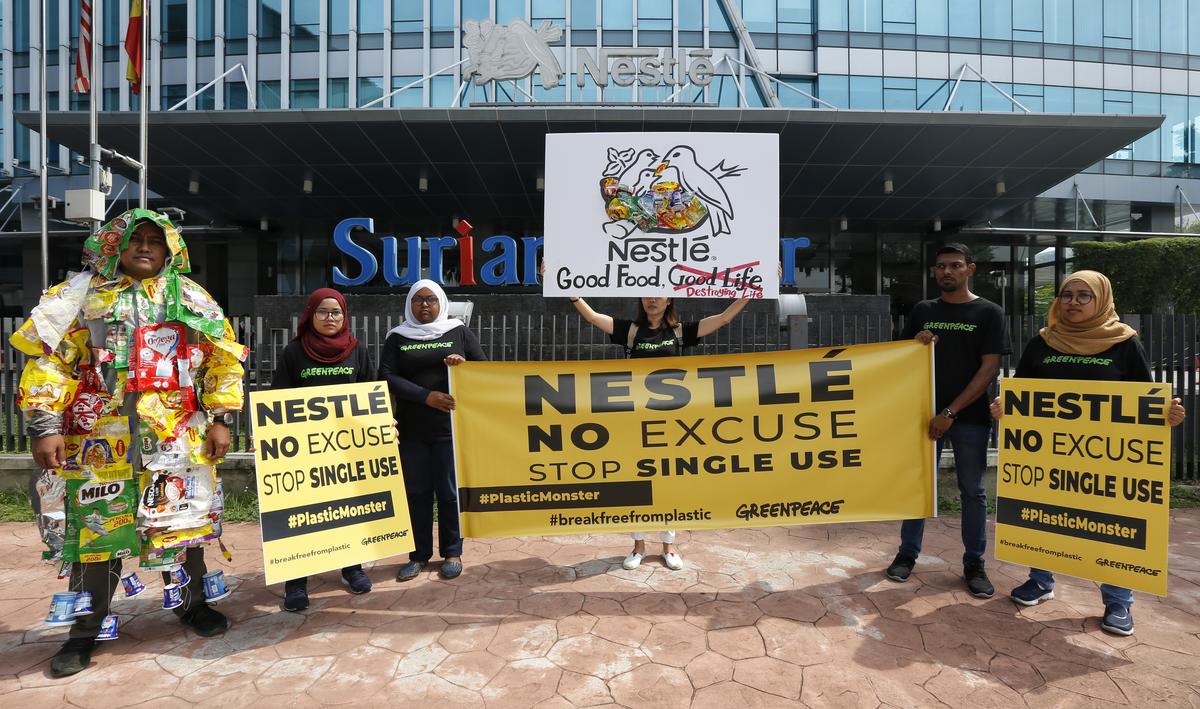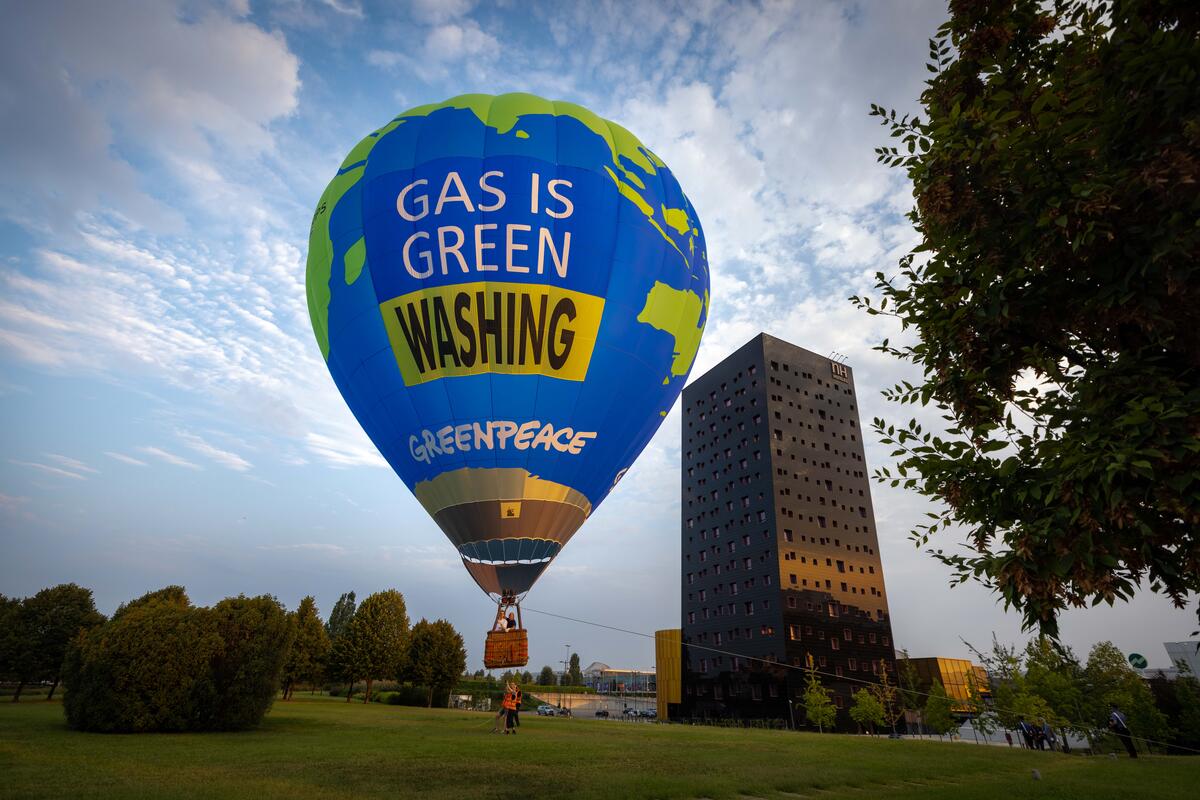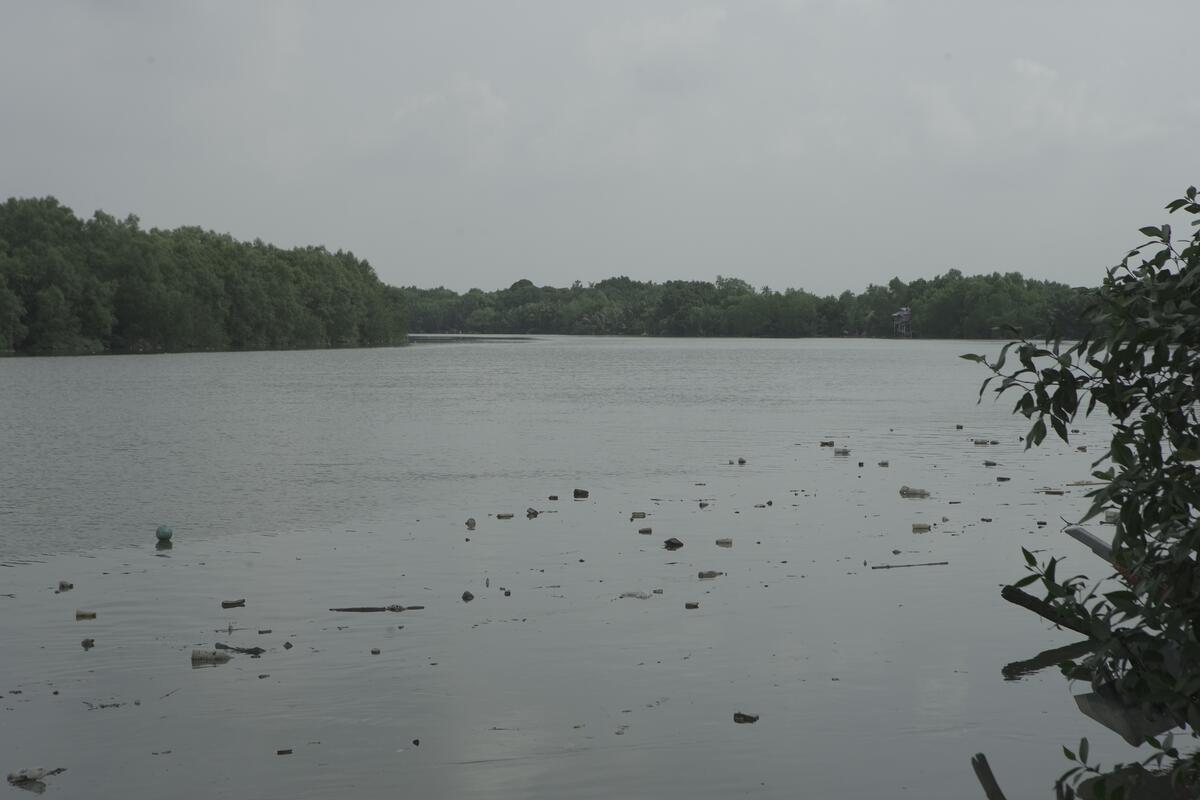New research exposes a crisis in the global trade of “recyclable” plastics.
KUALA LUMPUR – The plastic waste trade problem gained traction nationwide in recent months due to an overflow of imported plastic waste across several states, with Selangor at its epicentre.
A large source of the plastic waste coming into Malaysia has been made up of single-use plastics produced by Fast-Moving Consumer Goods (FMCGs) that are then consumed and shipped out from countries such as the United States, Germany, and the United Kingdom.
As such, Greenpeace Malaysia took part in a global wave of actions on Earth Day (April 22), picketing in front of the Nestlé (Malaysia) Berhad office in Petaling Jaya with a Plastic Goblin in tow.

Malaysian activists, one of them dressed as a Plastic monster called Goblin, protest at Nestle Berhad’s Headquarter in Mutiara Damansara, Petaling Jaya, to join the global movement demanding the company stop relying on single-use plastics in their packaging.
During the demonstration, Greenpeace Malaysia campaigner Heng Kiah Chun handed a letter of demand to Nestlé representatives calling for the company to act swiftly on their claims of reducing plastics footprint by phasing out single-use plastics across its supply chains and embracing the refill and reuse system as a solution.
“The imported plastic waste crisis in Malaysia, especially in Selangor, Penang, and Kedah should be a wake-up call that not all single-use plastics from FMCGs consumed by the global north can be recycled,” said Heng.
“If we want to solve the problem of imported plastic waste in Malaysia, we should also demand FMCGs like Nestlé set clear reduction targets on single-use plastic,” he added.
The view that the mass production of plastic packaging by corporations to boost profits, points to the same origins of the plastic crisis, is held by both Global Alliance for Incinerator Alternatives (GAIA) and Greenpeace, along with allies from the Break Free from Plastic Movement.
According to a new report released today by GAIA, with data analysis on the global waste trade from Greenpeace East Asia, water contamination, crop death, illness, and the open burning of plastic waste have flooded into Southeast Asia along with the world’s “recycled” plastics. After China’s import ban, waste flooded into Malaysia, Vietnam, and Thailand, which quickly set up import restrictions. Exports then overflowed into Indonesia, India, and Turkey.
Data indicates that Southeast Asia’s current plastics crisis is the pinnacle of a global experience, with waste piling up globally and domestically for all countries involved, even former exporters. Across the board, plastic waste exports dropped almost 50%, from 12.5 million tonnes in 2016 to 5.8 million tonnes in 2018 (available data from January to November 2018). Because plastic manufacturing is projected to rise, this drop in exports in part means ‘recyclable’ plastics will continue to stockpile or head for improper disposal at home [1].
“As wealthy nations dump their low-grade plastic trash unto country after country in the global south, the least the international community can do is safeguard a country’s right to know exactly what is being sent to their shores. However, ultimately, exporting countries need to deal with their plastic pollution problem at home instead of passing the burden onto other communities,” said GAIA Asia Pacific Regional Plastics Coordinator Beau Baconguis .
“Once one country regulates plastic waste imports, it floods into the next un-regulated destination. When that country regulates, the exports move to the next one. It’s a predatory system, but it’s also increasingly inefficient. Each new iteration shows more and more plastic going off grid — where we can’t see what’s done with it — and that’s unacceptable,” said Greenpeace East Asia senior campaigner Kate Lin.
“Recycling systems can never keep up with plastic production, as only 9% of the plastics ever produced are recycled. The only solution to plastic pollution is producing less plastic. Heavy plastic users — mainly consumer goods companies like Nestlé and Unilever, but also supermarkets — need to reduce single-use plastics packaging and move towards refill and reuse system to get us out of this crisis,” Lin, added.
-ENDS-
Note to editor:
Photos of Greenpeace Malaysia’s picket in front of Nestlé (Malaysia) Berhad on Earth Day can be found here.
Photos on plastic in SEA for press use can be found here.
GAIA’s research is compiled on a dedicated microsite: wastetradestories.org
Greenpeace East Asia’s data analysis can be found here.
[1] Based on historical trends, global cumulative plastic waste generation is expected to reach over 25,000 million metric tons by 2050. Geyer, R. et al (2017) Production, use and fate of all plastics ever made. Science Advances Vol. 3, no. 7. https://advances.sciencemag.org/content/3/7/e1700782. Plastic waste generation has been increasing in key exporting countries like Germany (increase of 3.9% between 2015 and 2017) and USA (estimated to increase 12% in 2018 compared to 2015).



